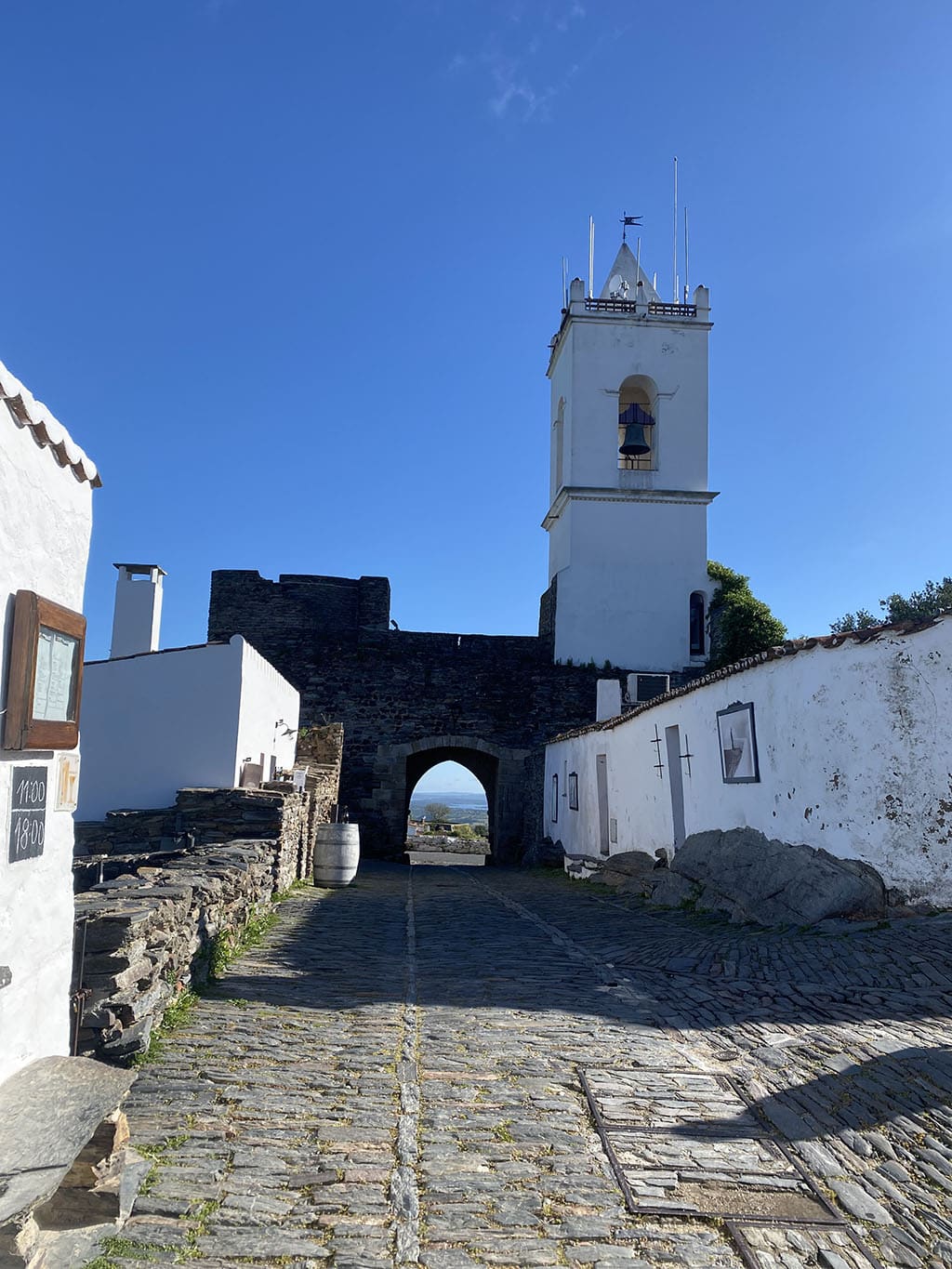Helga and I, along with a few family members, have just spent a marvellous long weekend in Monsaraz. It wasn’t our first time, and it certainly won’t be the last. The village’s beauty and wonderful hilltop location are addictive.

Monsaraz is a very picturesque village of 800 people located on a height in the Alentejo, about a two-hour drive north of Loulé. It is one of the oldest villages in Portugal, designated a monument village in 2017, and known for its stunning views, authentic medieval charm, and historical significance. Monsaraz’s history dates back to prehistoric times, with evidence of human settlement in the area since the Neolithic period, and there are quite a few megalithic dolmens and menhirs near Monsaraz.
Throughout its history, Monsaraz has been occupied by various civilizations, including the Romans, Visigoths, and Moors. However, it was during the Middle Ages that Monsaraz flourished, becoming an important stronghold for the Portuguese Crown after its recapture from the Moors by King Sancho II, assisted by Templar knights, in 1232. The village was donated by Sancho to the Templars after its recapture and played a crucial role in defending Portugal’s border with Spain.


In the 17th and 18th centuries, Monsaraz experienced a period of decline, as the strategic importance of its location diminished. However, its medieval charm and historical significance remained, attracting visitors interested in its rich heritage and breathtaking views.


Today, Monsaraz is renowned for its well-preserved medieval architecture, narrow cobblestone streets, and panoramic vistas. Visitors can explore attractions such as the castle, a 13th century medieval fortress and national monument that offers sweeping views of the surrounding countryside, and the Manueline Renaissance 16th century Church of Santa Maria da Lagoa.
In addition, the village overlooks the Alqueva Lake, the largest artificial lake in Europe, which was formed in 2002 by damming the Guadiana River. The lake makes Monsaraz a boating, fishing, swimming and water sports center.
The village also hosts cultural events and festivals throughout the year, celebrating its heritage and showcasing local traditions. Monsaraz is known for its local crafts, particularly pottery, which has been produced in São Pedro do Corval, near the village, for centuries.


Monsaraz may be a small village, but there are some outstanding boutique hotels (São Lourenço do Barrocal, Casa Pinto, Horta da Coutada, Casa Saramago, Vila Planície) and restaurants (Sahida, Taverna os Templários, Sem-Fim) in town or nearby. And we shouldn’t forget that there are a number of excellent wineries nearby – Esporão, Adega José de Sousa, Monte dos Perdigões, Ervideira and Herdade do Sobroso (to name just a few of my favorites) are all within a short drive from Monsaraz.

Overall, Monsaraz continues to captivate visitors with its blend of history, natural beauty, and cultural richness, making it a must-visit destination in the Alentejo. This wonderful place is so close to us in the Algarve that it would be a shame if you haven’t been there. Put Monsaraz on your bucket list!






















